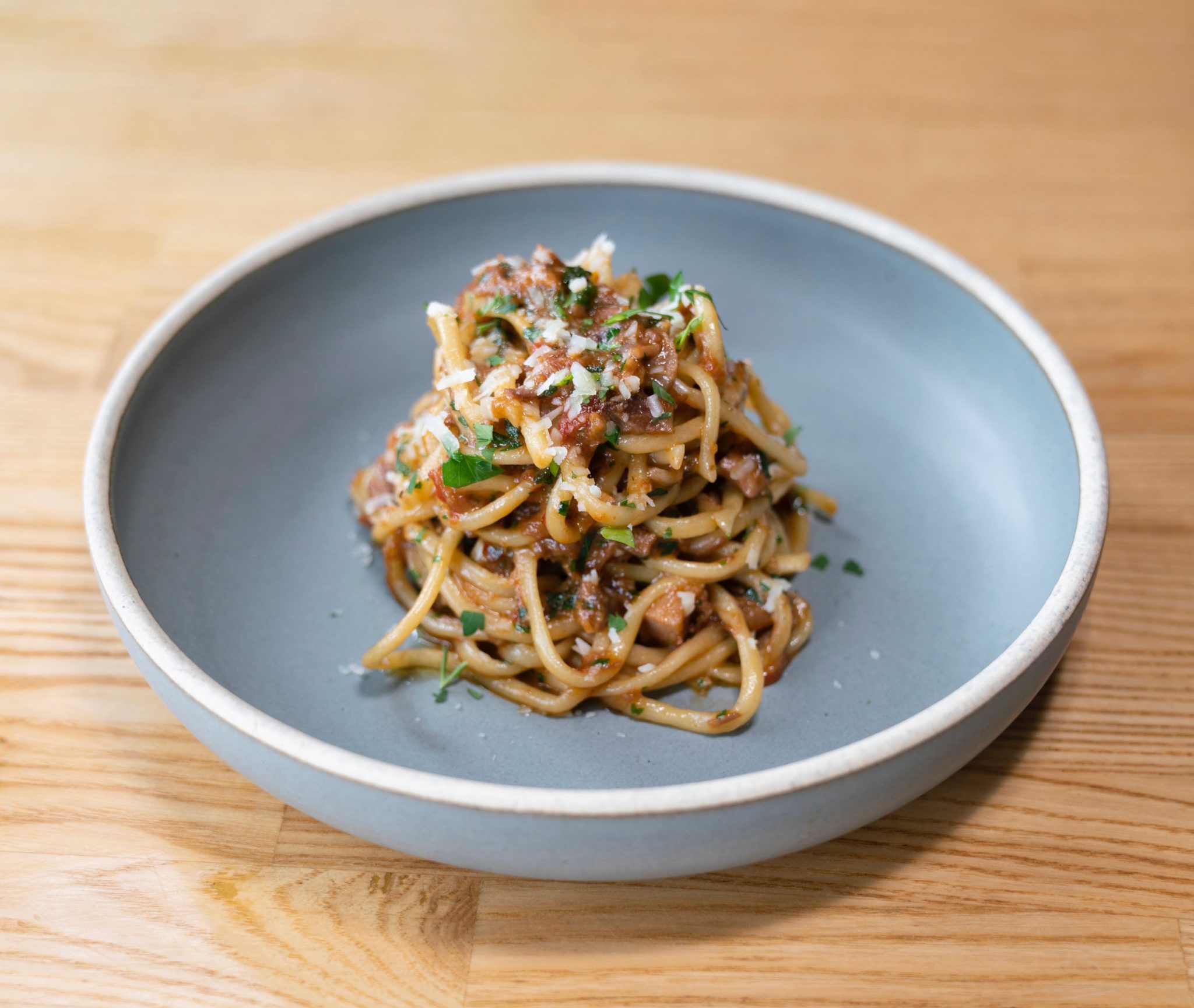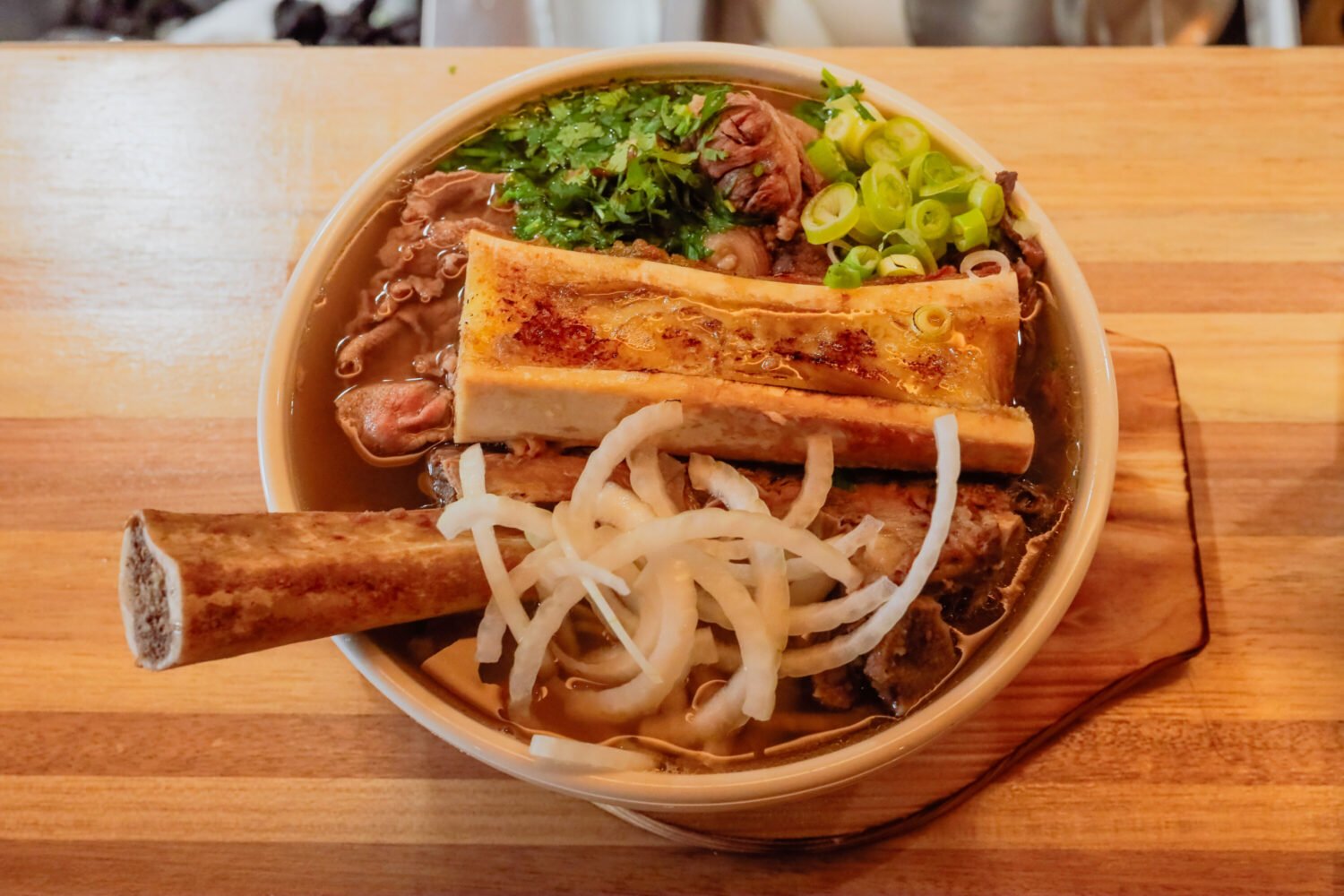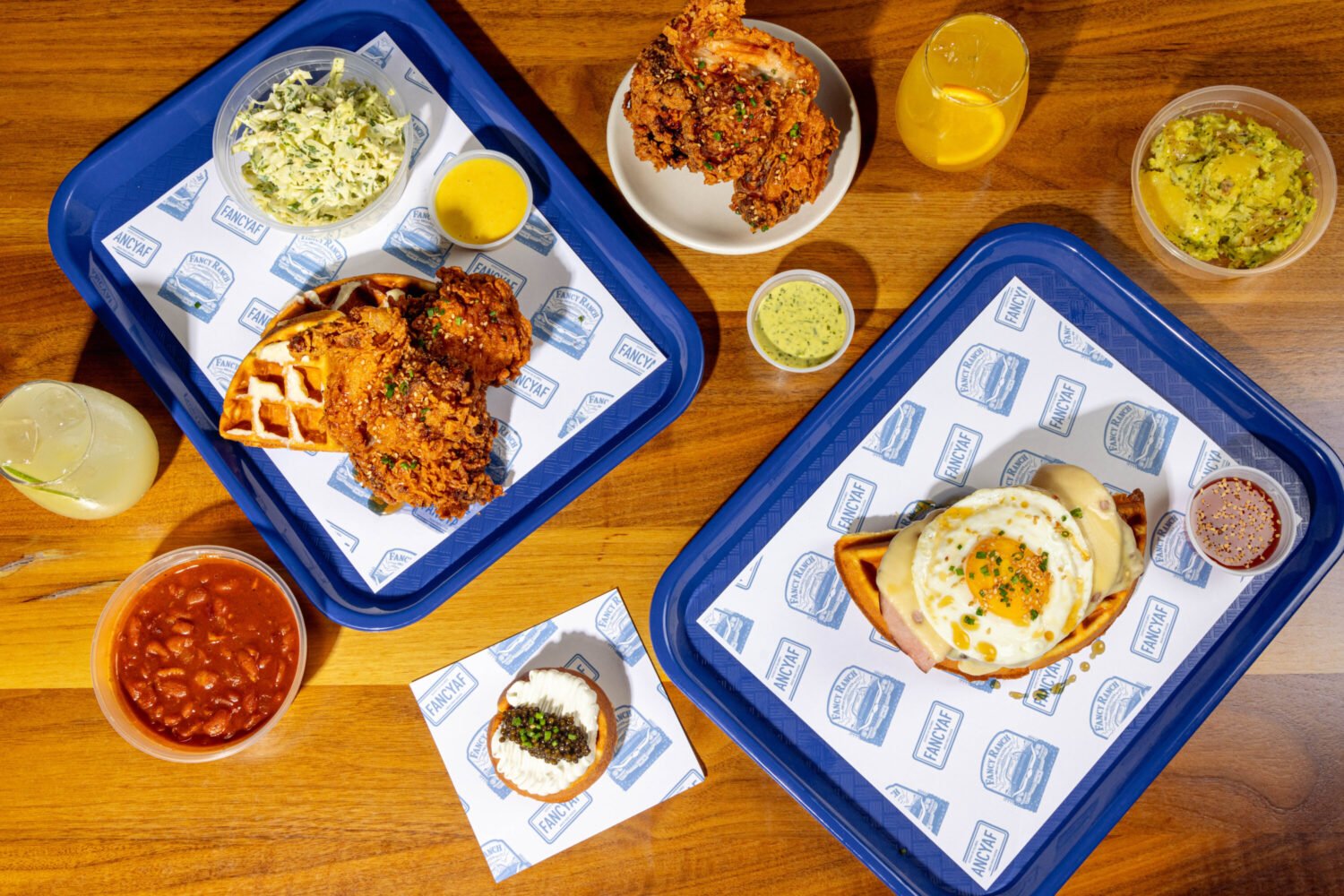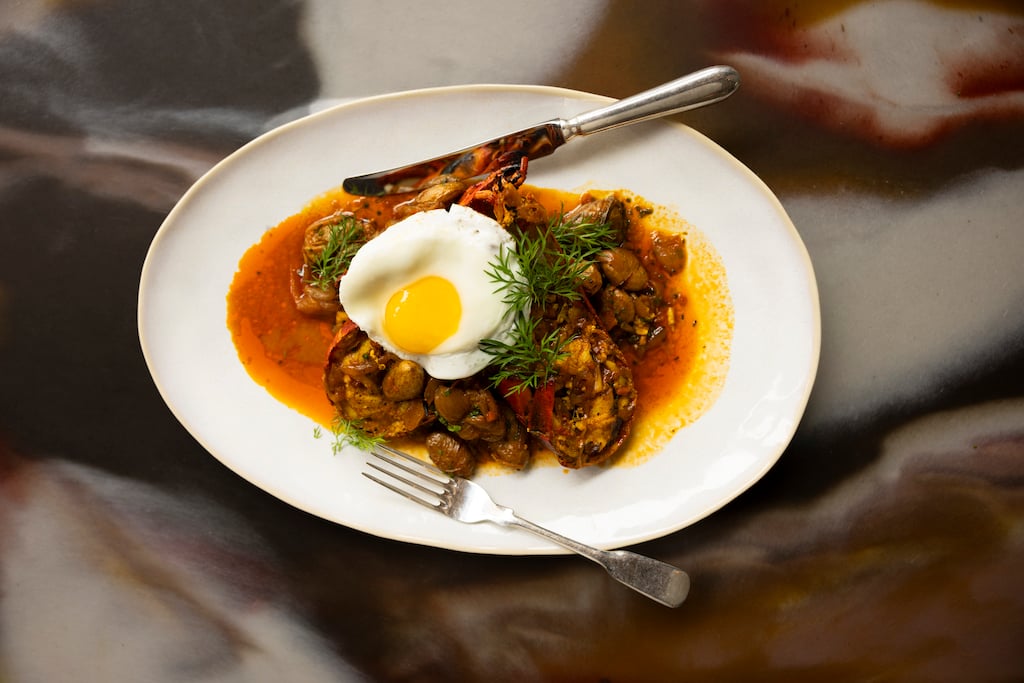Jon Sybert, chef/co-owner of Reveler’s Hour in Adams Morgan, serves this robust ragu, a staple of both his home and restaurant kitchens, year-round: “The spiciness being lovely on a hot day, and the unctuous belly doing the heavy lifting on a cold one.” He also loves the sauce spooned over grilled vegetables, as a topping for cooked shell beans, or served with grilled bread topped by a sunny-side-up egg.
Serves 8 to 10
To prepare the pork belly:
- 4 pounds pork belly (look for the meatiest, least fatty piece)
- 3 tablespoons kosher salt
- 1 tablespoon black pepper
Season the pork belly with salt and pepper. Refrigerate it uncovered overnight to absorb the seasoning and deepen the flavor. (You can skip this step.)
Preheat the oven to 300 degrees. Roast the pork belly, skin side up, for about 2 hours. It should be very tender when you test it with a fork. If it’s not, cook another 15 minutes and check again. (Cooking can take as long as 3 hours.) Remove pork belly from the oven and let cool. Using a knife, cut away as much fat as possible and dice the meat into ½-inch pieces.
Note: If the skin has managed to get crispy—not a guarantee—chop/crumble it, and reserve to garnish the pasta at the end.
While the pork cooks, make the ragu:
- 2 to 3 yellow onions, diced small
- 3 stalks celery, diced small
- 1 to 2 tablespoons red chili flakes, depending on how spicy you like it.
- ½ bottle dry white wine, such as Sauvignon Blanc
- 1 quart chicken stock
- 2 12-ounce boxes Pomi or San Marzano crushed tomatoes
- Olive oil, as needed
- Black pepper and kosher salt, as needed
In a large pan over low heat, sauté the onion and celery in olive oil until they caramelize to as dark as possible without burning. (Go slowly with this step; it can take 30 minutes or more.) Season with 1 tablespoon kosher salt. Add the chili flakes and stir them once into the mixture. Add the white wine and reduce the liquid until the pan is nearly dry.
Turn the heat to medium, add the stock, and reduce by a third. Add the tomatoes. Bring to a light simmer, then reduce the sauce until it’s thickened, stirring occasionally. (You’ll know it’s done when you can drag a spoon through the sauce and not see “puddles” of liquid.) Season to taste with more salt and 5 cracks of pepper. The sauce can be made in advance and refrigerated, before you’re ready to add the pork belly.
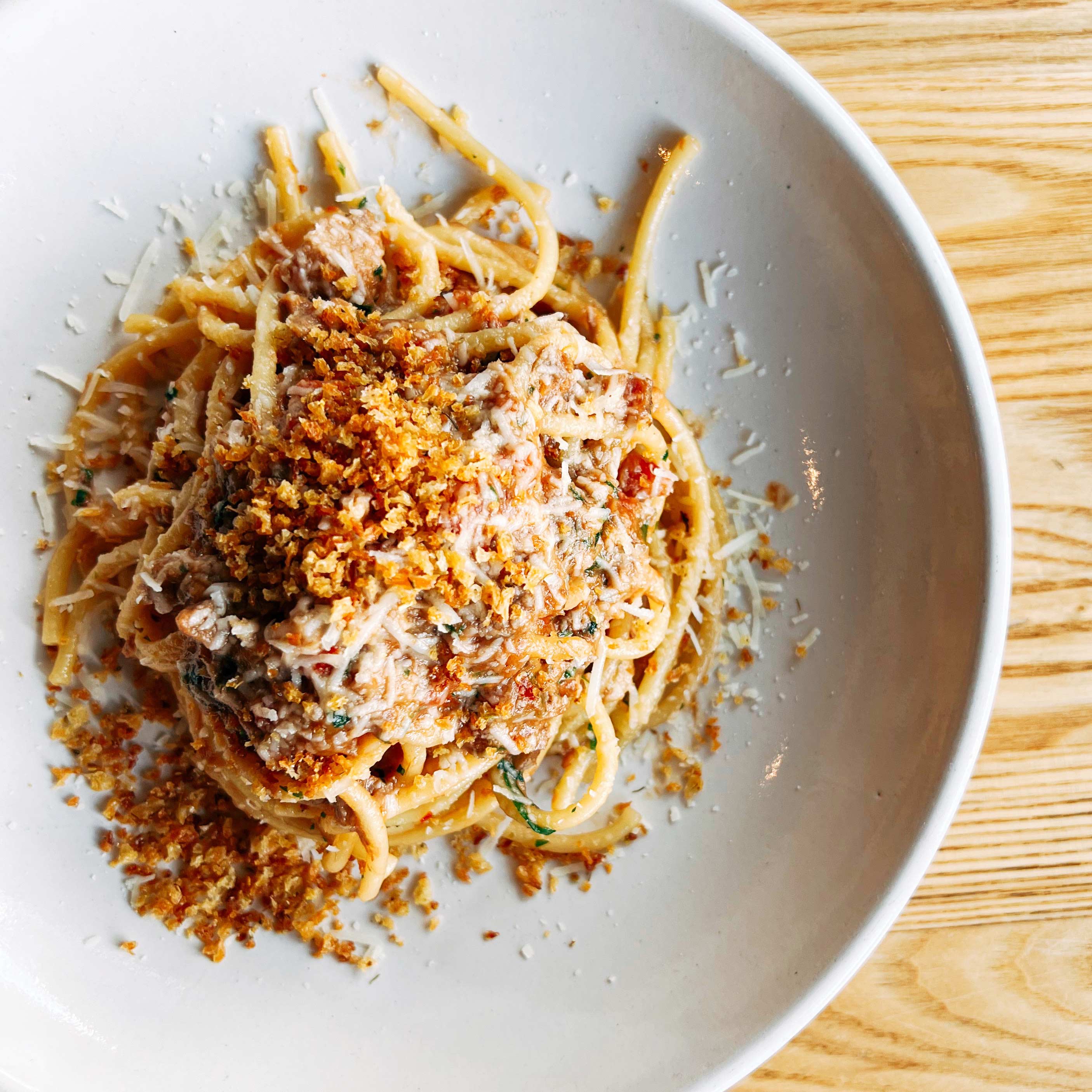
To serve:
- 1 to 2 pounds dried bucatini, penne, or any thick noodle (Sybert likes De Cecco and Martelli brands), depending on how many people you’re serving.
- 1 cup chopped parsley
- High-quality olive oil (optional)
Boil the pasta according to the instructions on the package. In a separate pot, combine the pork belly and sauce and warm over low heat. Toss the cooked pasta with the ragu—Sybert uses 2 cups for every pound of dried noodles—and parsley. Top with a light drizzle of high-quality olive oil, if you wish. If any ragu is left over, refrigerate or freeze it.
This story appears in the November 2022 issue of Washingtonian.

